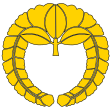Music of Okaiken
| Culture of Okaiken |
|---|
 |
| History |
| People |
| Languages |
| Cuisine |
| Festivals |
|
Religion
|
|
Music and performing arts
|
|
Sport
|
|
Monuments
|
|
Symbols
|
|
|
The music of Okaiken includes a wide array of performers in distinct styles both traditional and modern. The word for music in Sanese is 音楽 (ongaku), combining the kanji 音 "on" (sound) with the kanji 楽 "gaku" (enjoy). Okaiken is the largest physical music market in the world, with ε2.5 billion in 2014 and the second largest overall music market, with a total retail value of 3.5 billion enieos in 2014Template:Dashdominated by Sanese artists, with 45 of the top 50 best selling albums and 50 of the top 50 best selling singles in 2014.
Local music often appears at karaoke venues, which is on lease from record labels in Okaiken. Traditional Sanese music is quite different from Western music as it is often based on the intervals of human breathing rather than mathematical timing.
Traditional and folk music[edit | edit source]
There are two forms of music recognized to be the oldest forms of traditional Sanese music. They are shōmyō (声明 or 聲明), or Buddhist chanting, and gagaku (雅楽) or orchestral court music, both of which date to the Asama and Heiji periods. Gagaku is a type of classical music that has been performed at the Imperial court since the Heiji period. Kagura-uta (神楽歌), Azuma-asobi (東遊) and Yamato-uta (大和歌) are indigenous repertories. Tōgaku (唐楽) and komagaku originated from the Peilanese Wu dynasty via Kwangju . In addition, gagaku is divided into kangen (管弦) (instrumental music) and bugaku (舞楽) (dance accompanied by gagaku).
See Also[edit | edit source]
References[edit | edit source]
External Links[edit | edit source]
| ||||||||||||||||||||||||||||||||||||||||||||||||||||||||
